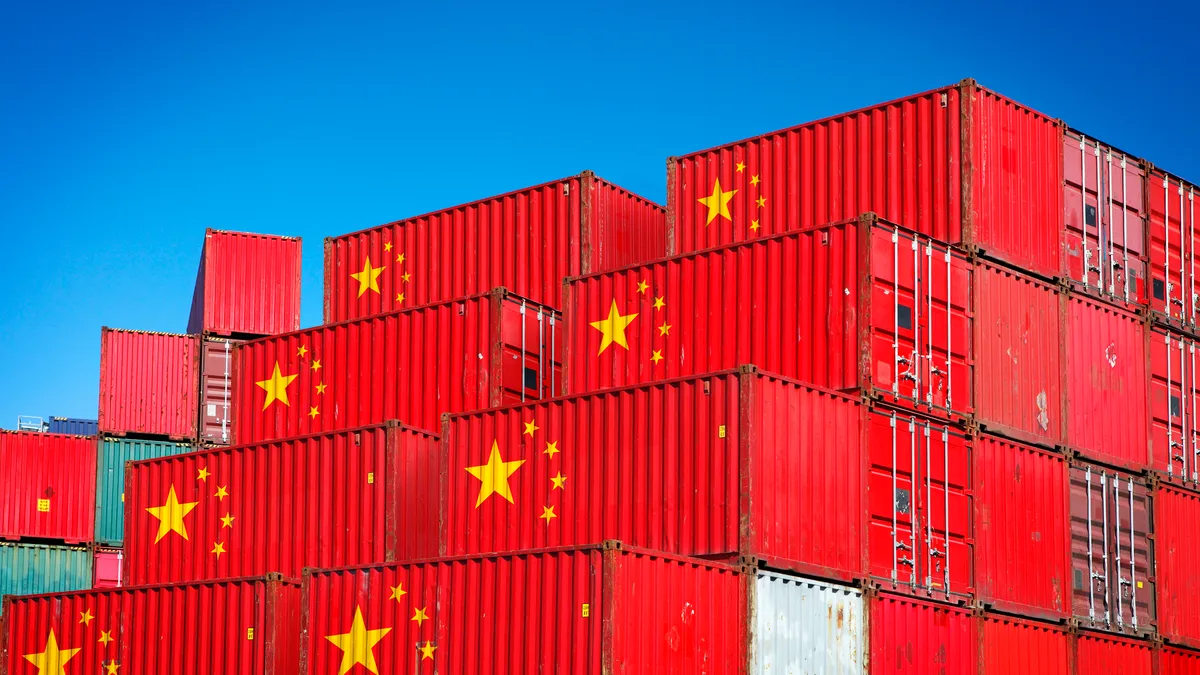UPDATE: July 6, 2018: The Trump administration's tariffs on $34 billion worth of Chinese imports went into effect Friday morning, the first of two rounds of tariffs set to total $50 billion.
In April, the U.S. Trade Representative published a list of product categories that would be subject to tariffs. In June, USTR announced 818 of the categories were selected for the first set of tariffs following a period of public review and advice from trade advisory committees. A second set of tariffs, which contains 284 more product lines worth $16 billion in imports, is slated for further public review and hearings before a final determination is made.
Upon announcement of the first set of tariffs, the Chinese government said it would "immediately take tariff measures of the same scale and intensity." After the American tariffs took effect at midnight, China quickly levied retaliatory tariffs of 25% on $34 billion worth of U.S. products, reports Xinhua.
The launch of the tariffs is the first move of a trade war that has dominated negotiations and politics across the Pacific for months. Experts fear tit-for-tat measures by the American and Chinese governments will draw out the conflict and hurt the economy while failing to make China sufficiently address deficiencies in intellectual property protection.
Technology supply chains are expected to take some heat because many companies source components of tech hardware from China, where production costs are lower.
Dive Brief:
-
The U.S. Trade Representative published a proposed list for an additional 25% tariff on an array of products from China valued at approximately $50 billion — a value set to offset impacts of Chinese trade policies and practices to the U.S. economy. The 45 pages of tariffs sweep across industries, targeting products from the less obvious milking machines, sewing needles and seismographs to transistors, magnetic tape, steel, aluminum, lasers and various electrical equipment.
-
The list follows an investigation last fall which determined unfair practices and policies by the Government of China relating to intellectual property, technology transfer and innovation. Trump called for the investigation and tariffs under section 301 of the Trade Act of 1974, which permits the government to impose trade sanctions on foreign countries engaging in unfair trade practices or violate trade agreements.
- On Wednesday, China responded with its own list of products to be subject to an additional 25% tariff, reports China's Xinhua News Agency. The list includes 106 products across 14 categories.
Dive Insight:
The back-and-forth between the global superpowers is setting off fears of a trade war. Pharmaceuticals, industrial machinery and transportation vehicles and parts took the brunt of the tariffs while products impacting technology are less obvious to pinpoint.
But the impact to technology supply chains will be felt down the road, and many experts predict that these costs will ultimately be passed off to the consumer and felt by distributors and manufacturers.
In terms of intellectual property, the tariffs have a two-fold aim: Send a message to China to protect intellectual property and patent rights more and even the playing field for domestic companies competing with Chinese producers and manufacturers, according to Henry Su, partner at Constantine Cannon LLP, in an interview with CIO Dive.
In the long term these tariffs may help businesses with IP issues, but shorter-term costs (especially to consumers) will be hard to ignore.
The technology transfer issues at play in the tariff game rest on China's determination to become a global superpower across fields of technology and the high barriers to entry it places on foreign companies looking to do business in China or partner with Chinese firms.
Foreign companies can be required to share their technology, which a Chinese firm can then innovate with. Such interactions can benefit both sides by opening up new markets and increasing innovation with the technology, but the practice has incurred criticism by the Trump administration.
China's Vice Commerce Minister Wang Shouwen denied accusations of forced technology transfer on Wednesday at the unveiling of China's counter-tariffs, reports Reuters.
The U.S. Trade Representative will hold a period for public comment until May 11 and convene a public hearing May 15. The effects of the tariffs, however, will take much longer to realize.













